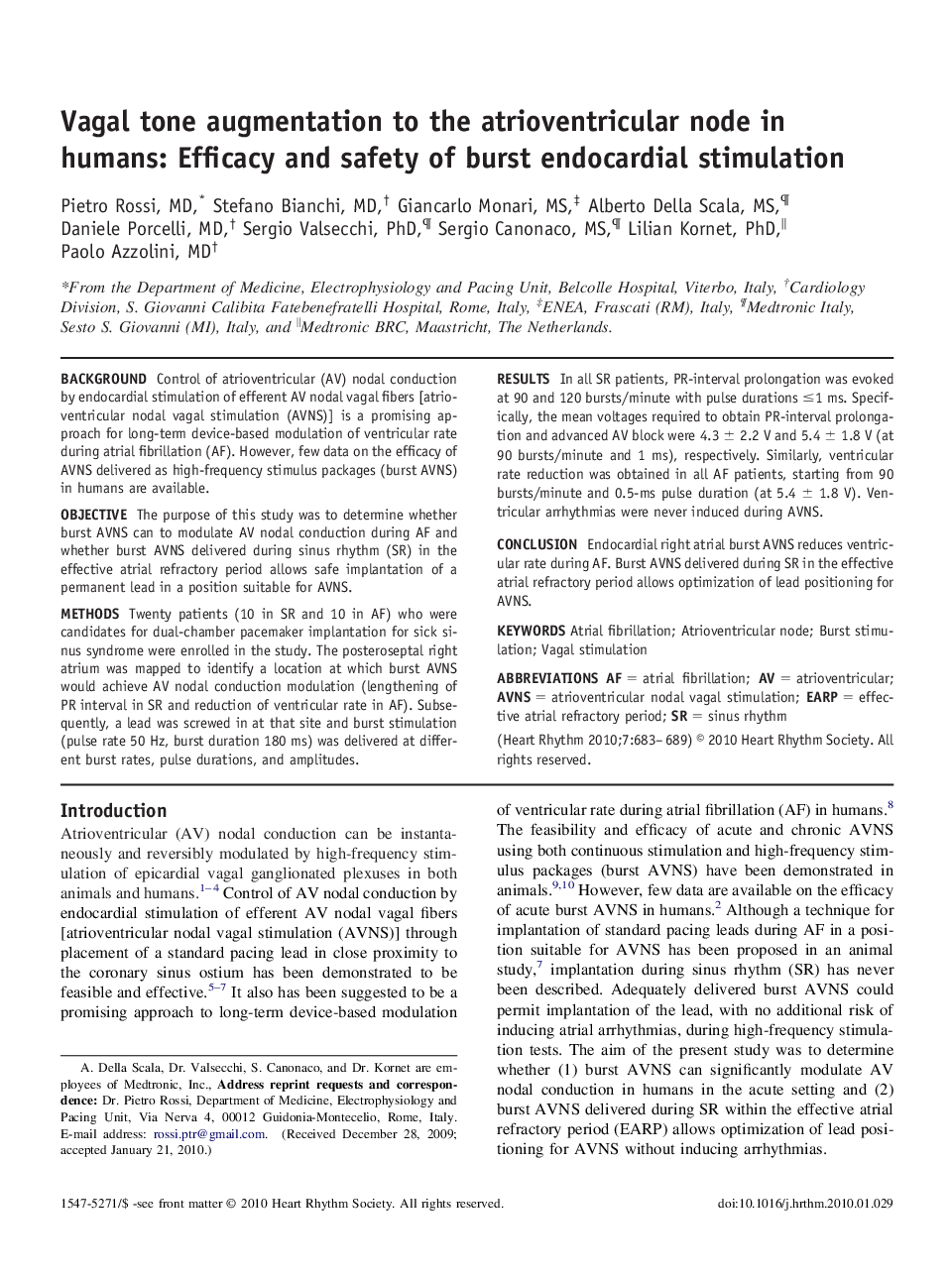| کد مقاله | کد نشریه | سال انتشار | مقاله انگلیسی | نسخه تمام متن |
|---|---|---|---|---|
| 2924142 | 1175895 | 2010 | 7 صفحه PDF | دانلود رایگان |

BackgroundControl of atrioventricular (AV) nodal conduction by endocardial stimulation of efferent AV nodal vagal fibers [atrioventricular nodal vagal stimulation (AVNS)] is a promising approach for long-term device-based modulation of ventricular rate during atrial fibrillation (AF). However, few data on the efficacy of AVNS delivered as high-frequency stimulus packages (burst AVNS) in humans are available.ObjectiveThe purpose of this study was to determine whether burst AVNS can to modulate AV nodal conduction during AF and whether burst AVNS delivered during sinus rhythm (SR) in the effective atrial refractory period allows safe implantation of a permanent lead in a position suitable for AVNS.MethodsTwenty patients (10 in SR and 10 in AF) who were candidates for dual-chamber pacemaker implantation for sick sinus syndrome were enrolled in the study. The posteroseptal right atrium was mapped to identify a location at which burst AVNS would achieve AV nodal conduction modulation (lengthening of PR interval in SR and reduction of ventricular rate in AF). Subsequently, a lead was screwed in at that site and burst stimulation (pulse rate 50 Hz, burst duration 180 ms) was delivered at different burst rates, pulse durations, and amplitudes.ResultsIn all SR patients, PR-interval prolongation was evoked at 90 and 120 bursts/minute with pulse durations ≤1 ms. Specifically, the mean voltages required to obtain PR-interval prolongation and advanced AV block were 4.3 ± 2.2 V and 5.4 ± 1.8 V (at 90 bursts/minute and 1 ms), respectively. Similarly, ventricular rate reduction was obtained in all AF patients, starting from 90 bursts/minute and 0.5-ms pulse duration (at 5.4 ± 1.8 V). Ventricular arrhythmias were never induced during AVNS.ConclusionEndocardial right atrial burst AVNS reduces ventricular rate during AF. Burst AVNS delivered during SR in the effective atrial refractory period allows optimization of lead positioning for AVNS.
Journal: Heart Rhythm - Volume 7, Issue 5, May 2010, Pages 683–689